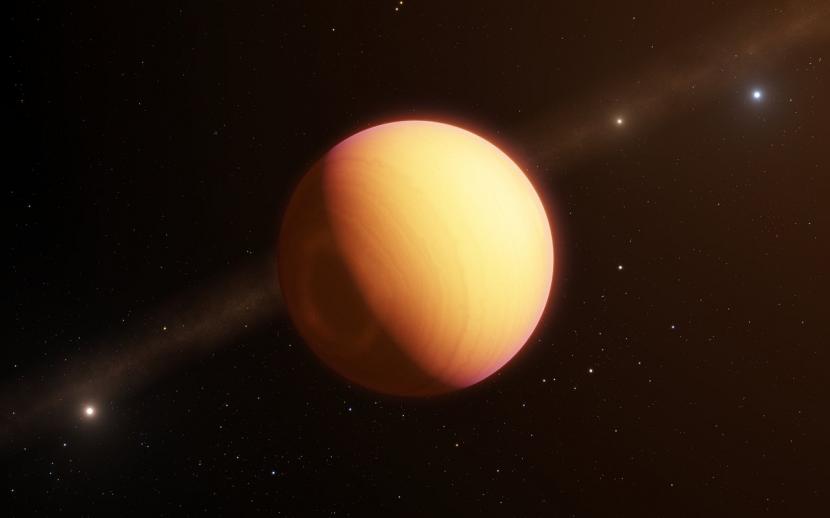For the first time, scientists have detected a carbon isotope from such a great distance.
REPUBLIKA.CO.ID, JAKARTA — Astronomers detected carbon isotope in planet eksasurya or exoplanets. In the haze surrounding the gaseous exoplanet named TYC 8998-760-1 b, astronomers detected a form of carbon known as carbon-13. This discovery shows exoplanets formed far from their parent stars.
“It is very special that we can measure this in the atmosphere of an exoplanet, at such a great distance,” said astronomer Yapeng Zhang of Leiden University in the Netherlands.
Zhang said that when compared to stars are very bright, while planets are very dim. Researchers usually identify planets by detecting their effect on their parent star, either by gravity, or by dimming the star’s light as it passes in front.
This exoplanet has about 14 times the mass and twice the size of Jupiter, meaning it is relatively bright with reflected starlight. So the research team led by Zhang took a closer look to see if the light reflected by the stars could tell them anything.
Specifically, they used an instrument called the Spectrograph for Integral Field Observations in the Near Infrared (SINFONI) on the European Southern Observatory’s Very Large Telescope in Chile. This instrument observes the spectrum of light.
“Isotopes are quite interesting. They are all forms of the same element that have the same number of protons and electrons, but different numbers of neutrons,” Zhang said.
Zhang explained that Carbon-12 is the most common stable carbon isotope. As for Carbon-13, it has six protons and six electrons, but seven neutrons.
“This is important because their formation pathways are different, and they behave differently depending on their environmental conditions,” Zhang said.
At TYC 8998-760-1 b, the researchers expected a certain abundance of carbon. The amount of carbon-13 they found in the exoplanet’s atmosphere was twice the expected abundance. The team believes that this could tell something about the conditions under which TYC 8998-760-1 b formed.
“The planet is more than one hundred and fifty times farther from its parent star than Earth is from the Sun,” explains astrophysicist Paul Mollière of the Max Planck Institute for Astronomy in Germany.
“At great distances, ice may have formed with more carbon-13, leading to a higher isotopic fraction in the planet’s current atmosphere,” continued Mollière.
Mollière said the detection of isotopes in the atmosphere is not yet possible for many exoplanets. But as telescopes continue to improve, they could provide new ways to study exoplanet formation.
“The hope is that in the future, isotopes will be more helpful for understanding exactly how, where, and when planets formed,” said astronomer Ignas Snellen of the University of Leiden.
– .

